Titan Images:This image is the location of
Huygens landing site:
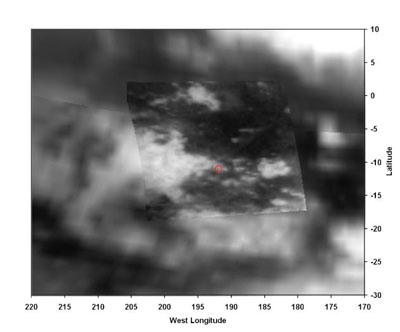
Initial views as
Huygens passed through the dense
regions of the atmosphere. A defined coastline is
present as are rivers carved by liquid methane. The
white areas near the bottom are low clouds:
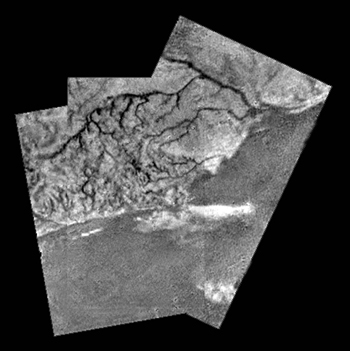
A bit closer to the surface,
Huygens images what
looks like mountains piercing what may be a methane
ocean:
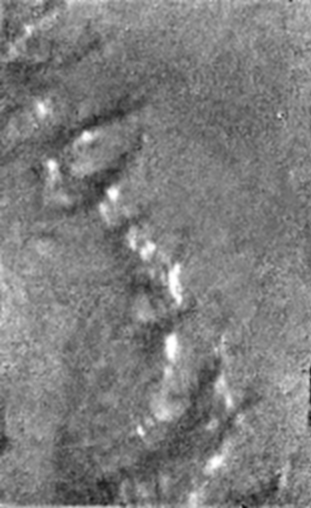
As
Huygens descended, a view of what looks like a
coastline was spied prior to landing:
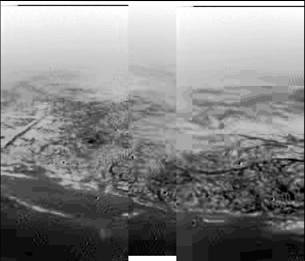
This image is a true color rendition
of
Titan's surface:
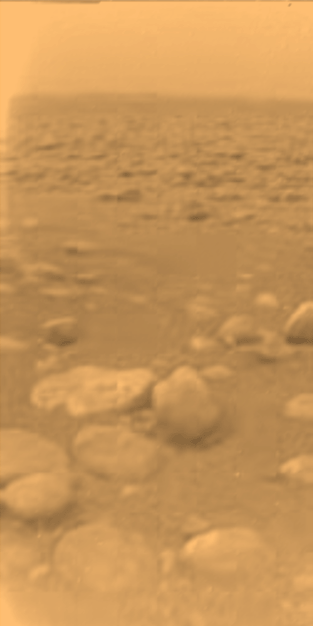
And this image shows the dimensions
of the objects in the above image:
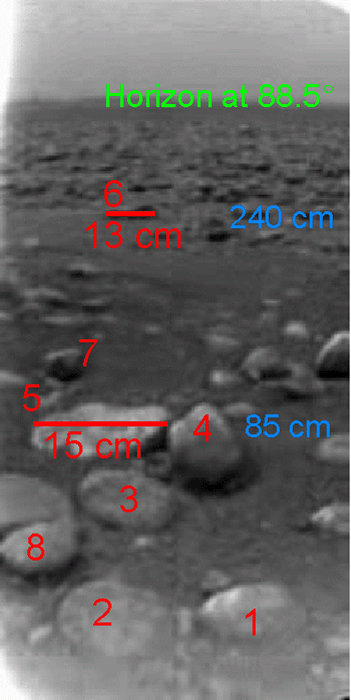
And finally, a model of what we think the
atmosphere of
Titan is like compared to
Earth
(notice how much farther
Titan's atmosphere
extends):
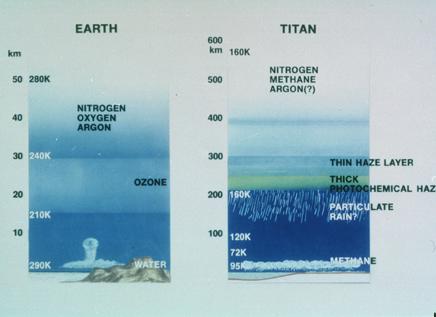
Details of the
Huygens mission can be
found here: |

